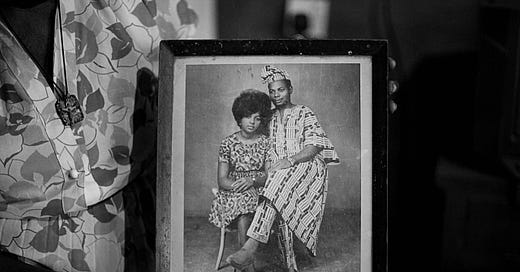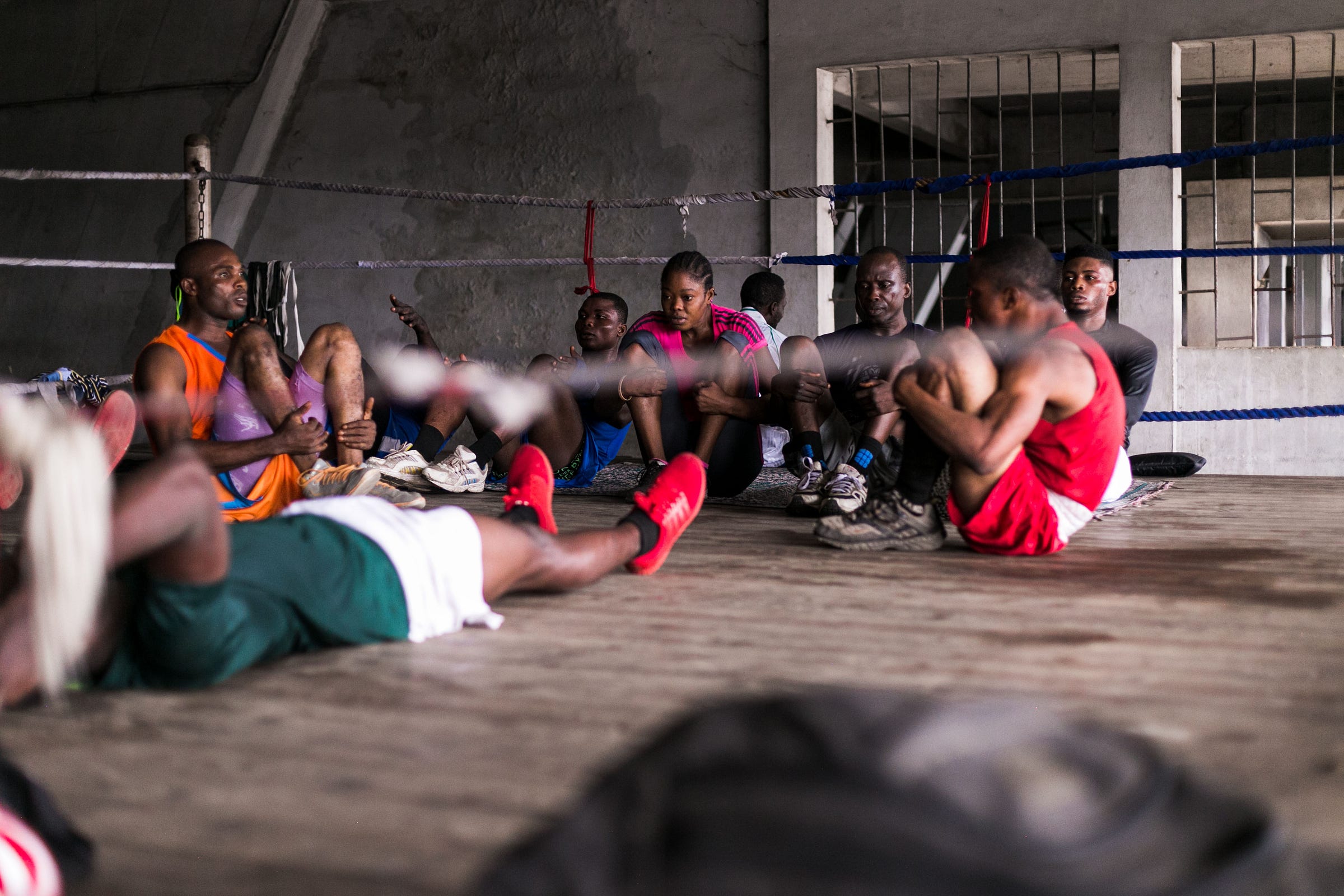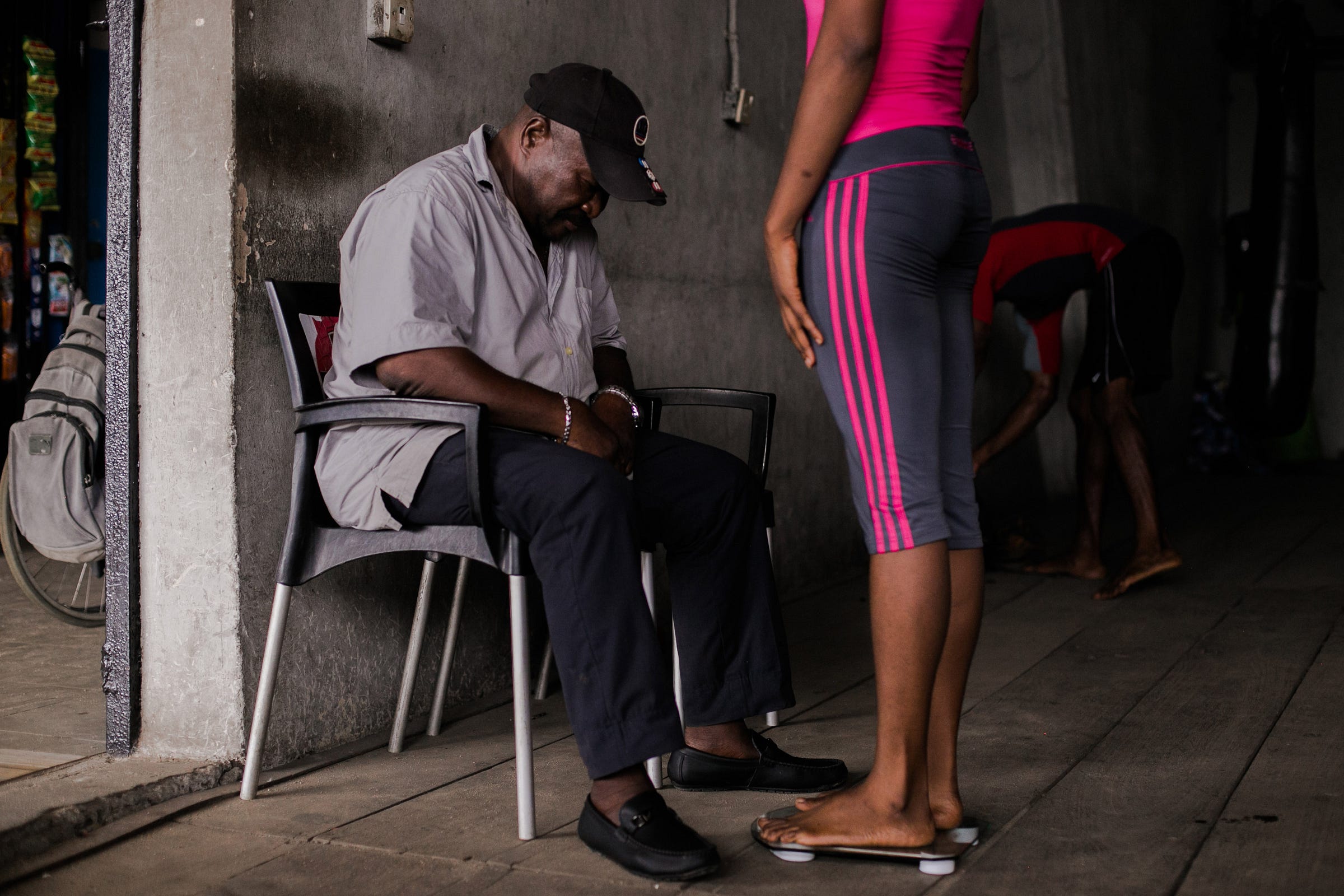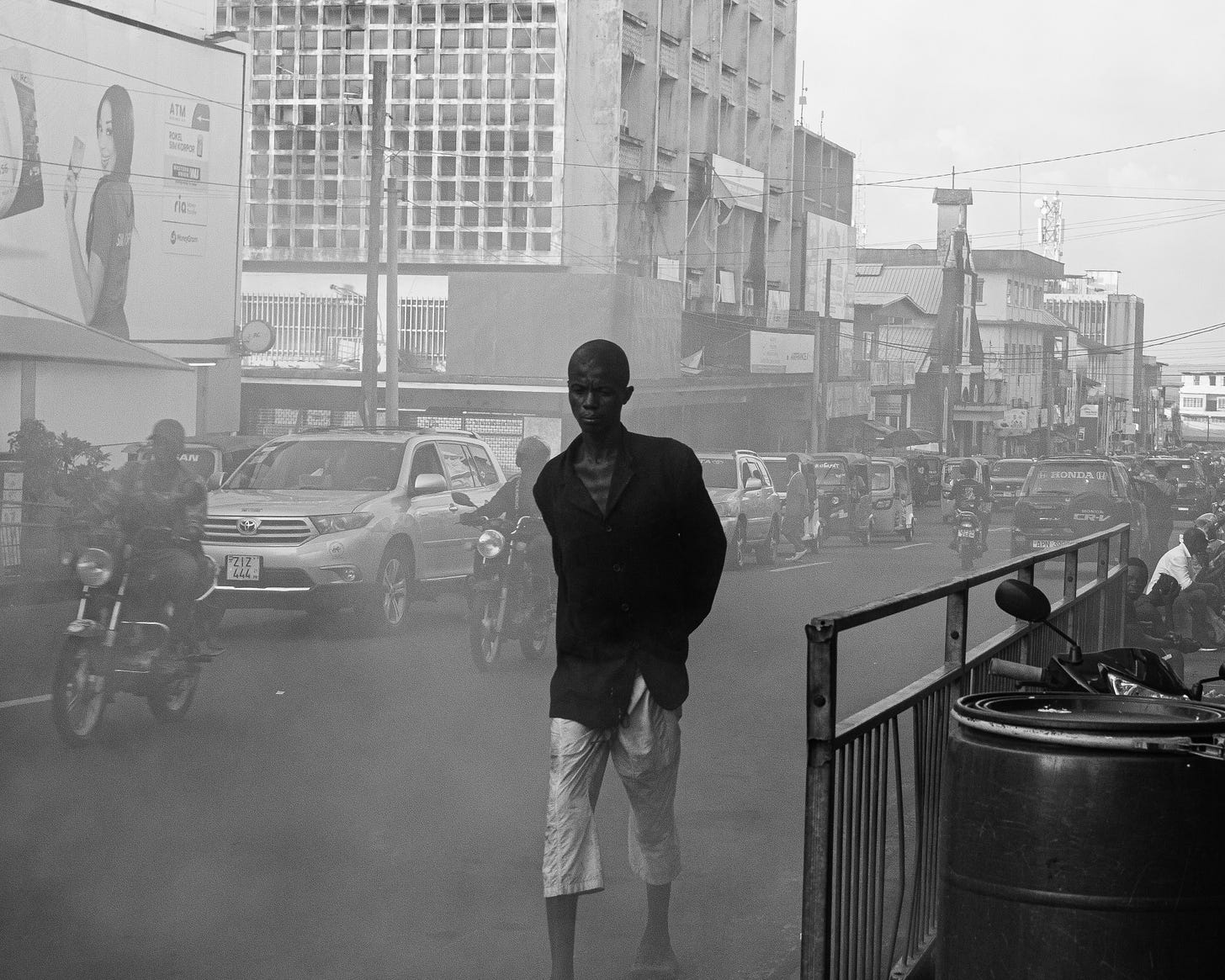“From Emman’s Photos, Second to None,” reads a tag in small print. It’s a clarifying mark on the bottom left of the photograph, noting also of a business location. But it says little of when the photograph was taken. The hands that hold one photo into focus are different in character from those in the picture being held—especially the woman’s. In Emman’s photo, the hands belong to a younger woman, and I can assume this because of how her fingers fall over each other with casual poise. And then I look to the right, and notice other smudged fingers, pointing as if to display what has been touched with those hands in the time between both photographs.
Nneka Iwunna Ezemezue: “The story behind this image is what makes it special to me.”
I was in Ebonyi State, Nigeria, working on my project Left Behind. It was difficult getting access to widows who were willing to share their stories. Somehow I met Theresa in a Catholic church. I had gone there to pray. She was willing to share her story. She took me to her house and we talked. She told me her story of widowhood and the photo she’s holding was something she treasured.
Theresa, 70, was the first wife of her husband. After his demise, the villagers wanted both wives to perform certain traditional rites in respect of their late husband. They were told to shave their heads and place it, together with other sacrificial items in the village shrine. Theresa, being a Catholic, refused because it was against her faith in God. Instead she asked a Reverend Sister to shave her head and she threw the hair into the pit. This infuriated the villagers. The other wife agreed to the rites and as a result, the other wife was given permission to kick Theresa out of their late husband's house. She burnt everything Theresa shared with their late husband. Theresa had to return to her parents house. This photo is the only thing Theresa has of her late husband. The story behind this image is what makes it special to me.
When an idea comes to me, I write it down and give it time to become clearer. Then I extensively research on the topic, especially to check if someone has worked on a similar project. It could take months or years for the idea to become clearer. During this time, I also think about the visual approach (which of course could change). Finally, I begin to work on it and I also make sure to keep an open mind about it. I document stories to create more awareness about societal issues with the aim to impact change. This change doesn't have to be massive; as long as my work can change perceptions, inspire hope, or move someone to do something positive, that's enough impact in the society.
Photography has the power to influence peoples' mindsets and leave impressions much faster than words can. It shows us what's going on in the world and it can be used to shed light on injustice and sidelined aspects of society.
Two photographs by Nneka Iwunna Ezemezue
About Nneka Iwunna Ezemezue
Nneka Iwunna Ezemezue is a multidisciplinary artist based in Lagos, Nigeria. Her work has been exhibited and published internationally. She is a grantee of the Magnum Foundation for her Left Behind project and has shortlisted for the Contemporary African Photography Prize. Nneka is a member of the Women Photograph and African Photojournalism Database. More about her work can be accessed on her website, via Instagram. Read features on the World Press Photo Witness blog, and on NPR.
Last Week: Abdul Hamid Kanu Jr.
I was walking down the street to thrift a few shirts. I heard the sound of a loud truck as it emitted smoke that clouded the street. This stranger was walking up to where I was coming from and I had just a few seconds to lift up my camera, press the shutter, and continue going about my walk.
Read More: Shadows and Dust
Support TENDER PHOTO
This is the 47th edition of this publication. The newsletter can also read on web (best for viewing images), and via the Substack iOS/Android apps. Every week I feature one photograph and the photographer who took it: you’d read a short caption from me, and a statement from the photographer. My goal is to support early to mid-career African photographers by engaging with their work. If this newsletter was shared with you, consider subscribing, or forward to a friend. And if you missed the newsletter, please check your spam or promotions folder, and whitelist the newsletter.








The 'colours' in the dress of the person holding the photograph in the first photograph is defiant. How is it that even in black and white images, we can tell where there is colour? The petals of the leaves on the dress of the photograph holder, calls to the colours in the dress of Theresa, the woman in the photograph.
That defiance leaks into the woman training among men, the woman standing to be weighed and assessed by a man, but standing nevertheless.
Thanks for pointing this out, Marci. It seems there was an error that made the options fail to load.